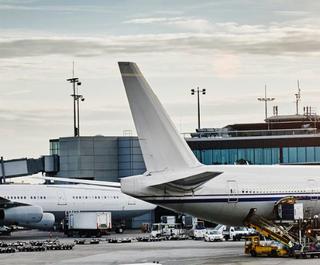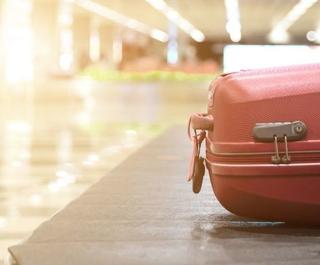
When travelling overseas, we all need access to money. In today's modern world there are several options for accessing foreign currencies when taking a holiday; they include a Multi-currency Cash Passport™, hard cash and credit cards. Kalianna Dean is the Managing Editor of a credit card comparison website. We asked Kalianna for her tips on using credit cards internationally. Here are her thoughts.
 Shopping while on Holidays
Shopping while on Holidays
Visa and Mastercard
There's no disputing that Visa and MasterCard® are both the most widely accepted credit cards across the world. For that reason, it would be wise to make sure that wherever you're going, you have one of these options with you. That way you can be confident that you won't be caught unable to access cash or make a payment. The majority of retailers that accept one type of card will also accept the other in Australia and overseas, so in terms of deciding between them, you're going to have to compare the various offers from individual banks.
American Express and Diners Club
If you're looking at American Express or Diners Club as an option when you travel, the only problem you might run into is not being able to use your credit card to pay at certain restaurants or retailers. Travelling around Africa and parts of Asia, for example, can be difficult if you don't have any other card besides an American Express or Diners card and you might end up having to carry cash with you often (or use your back up Visa or MasterCard®). However, in terms of rewards, these cards can offer good return on points per dollar spent. Ultimately if the option is available though - it's a good choice, so when you can use them and you know you can pay them off before interest charges kick in, it's worth your while.
Foreign Transaction Fees
So how do you avoid excessive foreign transaction fees?
Both Visa and MasterCard® impose a standard one per cent currency conversion fee, so the final fee you pay is determined by what the issuing bank decides to add on top of that. A simple online comparison can show you what is offered by different credit cards. Check the terms and conditions and scan for foreign transaction fees and foreign ATM withdrawal fees. If the information isn't readily available, check the bank's website.
While Australia sadly lags behind the US and other parts of the world (where some banks are dropping foreign transaction fees) the majority of credit cards available here come with a foreign transaction fee of around two to four per cent. American Express and Diners Club, being US-based credit card providers, generally attract a lower add on charge by the Australian banks, for the very reason that in the US the banks have started to realise that customers are bothered by foreign transaction fees, so they are following a trend of abolishing foreign transaction fees.
Australian credit card providers have started to follow the trend described above, and in November 2012 Aussie announced that its new Low Rate Platinum card will not carry fees for overseas or foreign currency transactions. Bankwest also provides an option where the fee is waived. They both join the original No Foreign Transaction fee card, GE Money's 28 Degrees card, which has already been on the market for a while.
The popularity of online shopping in Australia, which mostly involves buying from an overseas website means we could still see more cards like these enter the market in months to come so watch this space as it's a big selling point for new credit cards.
Some premium level credit cards claim that they don't charge foreign transaction fees, however often there is an accompanying monthly fee or higher interest rate to compensate for any potential losses. You should consider the fine print of these types of cards carefully, or consider getting yourself an alternative credit card to use while overseas if you do have one.
Whichever credit card you choose, unfortunately there is still no way to protect yourself from fees charged by overseas ATM operators and retailers (except using cash of course).
Despite the best intentions of MasterCard® and Visa, credit card users can still be stung by charges imposed by foreign ATM operators, and these can be significant; as high as $10-$15 equivalent. In a foreign country you have to be aware of warnings telling you that the ATM operator will charge you. This particularly applies to 'group ATMs' that aren't affiliated to any particular bank.
Credit Card Cancellation
Another issue that can really take travellers by surprise is when they arrive overseas to find that their only credit card has been cancelled. This happens for a few reasons, but the main one is that the person leaving the country forgot to notify the bank. This is essential to do in the current environment of credit card scams and fraudulent activity, where new incidents are reported on almost a daily basis. It's understandable that the banks are always going to err on the side of caution if they see an unusual looking transaction on your account.
In most cases you can inform the bank through your online account the dates you're going away as well as where you'll be, so there shouldn't be any nasty surprises or panicky calls to the bank's emergency helpline.
.........................................................................................................................................................
Access Prepaid Australia Pty Ltd (ABN 47 145 452 044, AFSL 386 837) arranges for the issue of the Multi-currency Cash Passport in conjunction with the issuer, Heritage Bank Limited (ABN 32 087 652 024, AFSL/ACL 240 984). You should consider the Product Disclosure Statement for the relevant Cash Passport available at www.cashpassport.com before deciding to acquire the product. Any advice does not take into account your personal needs, financial circumstances or objectives and you should consider if it is appropriate for you.
*Lock in your exchange rates mean the exchange rate is locked in for the initial load only. The exchange rates for subsequent reloads will be set at the prevailing exchange rate at the time of the transaction.
** Other fees may apply – refer to the Product Disclosure Statement for a full list of fees and limits.
.........................................................................................................................................................
.........................................................................................................................................................
MasterCard® and the MasterCard Brand Mark are registered trademarks of MasterCard International Incorporated.
.........................................................................................................................................................










